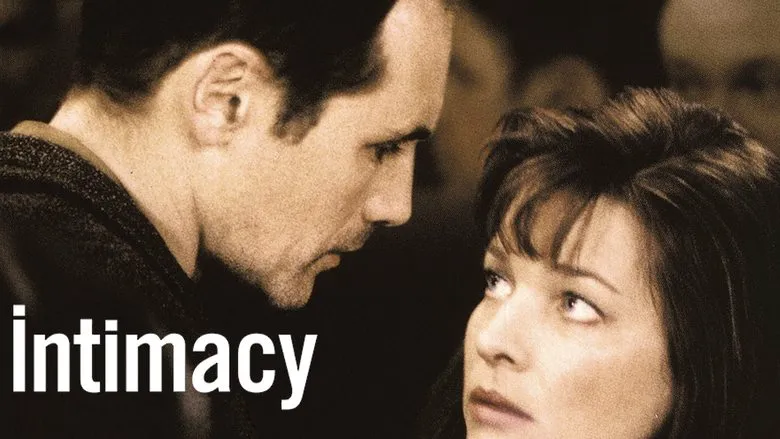Intimacy: A Profound Humanization of Desire
The film Intimacy, a distinguished recipient of the “Golden Bear” award at the Berlin Film Festival, remarkably transcends the casual inferences one might draw from its title. In contemporary Russian, the word “intimate” often carries connotations of a sex shop or serves as a crude euphemism for sex. However, such associations utterly fail to capture the profound depth and sophisticated humanity that imbue this cinematic masterpiece. It is indeed a rare triumph, deserving of its accolades, for few films so deftly humanize purely carnal relations, portraying the imitation of sexual intercourse with an astonishing proximity to the raw, lived act itself, allowing audiences to witness intimacy stripped of artifice.
Formally speaking, Intimacy ventures into territories that might descriptively be labeled pornographic, encompassing scenes that range from “soft” depictions of closed bodily configurations to “hard” portrayals of explicit oral-genital contact. Yet, even if the cinematic scope had been confined solely to dynamic physical interactions, the film’s intrinsic meaning and artistic purpose would remain qualitatively distinct from conventional pornographic productions. The fundamental essence of the porn genre is, by its very nature, the maximal simplification of the act for visual consumption. Its most basic, often self-made form typically involves little more than rudimentary light setup, a secured camera, and direct, mechanistic action. From a perspective akin to mathematical physics, pornographic sex is straightforwardly geometric and mechanistic: a mere aggregation of figures and repetitive crank-piston movements. Patrice Chéreau’s vision, conversely, navigates the complexities of topology, favoring an intricate mapping of connection over elementary geometry. Crucially, the deliberate and artful movement of the camera itself becomes an integral element, adding a vital third dimension to the mutual motion of the bodies on screen, elevating the viewing experience far beyond simple observation.

The Camera’s Intimate Gaze
In Intimacy, the camera transcends its role as a mere recording apparatus; it behaves as a spiritual substance, imbuing a seemingly two-dimensional physical interaction with profound three-dimensionality. Unlike the typical pornographic lens, which aggressively invites the viewer to partake directly in a simulated sexual encounter, the lens of Chéreau’s film deftly redirects the audience towards their own internal, intimate experiences. This deliberate shift is precisely why the film avoids casting archetypal, glamorous figures such as Rocco Siffredi, Cicciolina, or Hollywood’s idealized Apollos and Venuses. Instead, the director chooses performers whose forms are deliberately ordinary, whose skin appears devoid of Photoshopped gloss, leading some critics to even “diagnose” them with common imperfections like cellulite and comically lament their perceived lack of glamor. This lack of conventional allure becomes a powerful device, preventing a superficial, voyeuristic identification and instead coaxing the viewer into a more contemplative, self-reflective engagement with the narrative.

A Symphony of Silence: The Wordless Encounter
Chéreau masterfully withholds the prehistory of this relationship, allowing the audience to infer that the characters likely met through something as mundane as a personal advertisement. The premise is stark: a man who has left his family and a married woman seek each other out, meeting once a week at his sparse apartment. Their ritual is one of profound, unspoken understanding. He opens the door without a word; they shed their clothes in the same hushed silence, almost immediately intertwining their limbs to discharge the intense, accumulated charges of their mutual physical and emotional attraction. This raw, wordless communion echoes the evocative, albeit somewhat pompous, description penned by the poet Valery Bryusov at the turn of the century: “smoking flame soars in a whirlwind and merges bodies into a multi-colored chaos.”

The man’s futile attempts to comprehend the elusive motivations that draw the woman to him consistently lead to a void. The potent passion that inexorably pulls these characters into union possesses neither explanation nor even the capacity for spoken expression. Their profound understanding of each other is communicated not through dialogue, but through the eloquent, silent language of their bodies, conveyed with mere half-gestures and intertwined forms. For Patrice Chéreau, a quintessentially French director, heir to a national cinematic tradition celebrated for its eloquence and its astute, often verbose, dissection of love and sex, this deliberate rejection of the spoken word represents an extraordinarily radical artistic stance. Indeed, it would be almost inconceivable to envision Intimacy set in Paris, featuring French dialogue that wilfully eschewed direct sexual discourse. This creative decision, coupled with an anticipatory nod to an English-speaking audience, contributes to the film’s choice of London as its setting. The English language, where the word “fuck” has often been distilled into a simple, guttural interjection, seems uniquely poised to fall reverently silent before the profound, ineffable mystery of human intimacy as depicted in this remarkable film.
